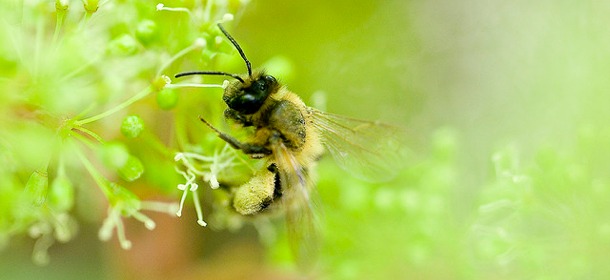Diseases/Conditions
Cancer: Rogue Cells Strike Out on Their Own to Survive in a Hostile Environment

Hyperoxidation of Cell Leading to Cell Death, by the Journal of Cellular Biology, Creative Commons Attribution-Noncommercial-Share Alike 3.0 Unported License
Cancer is a result of evolution rewound to a wilder time.
A new and revolutionary view of cancer suggests that it’s the result of cells reverting to ancient pre-animal and pre-plant programming in an attempt to survive in a hostile environment. Cancer is cells that have reverted to an earlier, wilder time in a survival attempt for themselves only. Rather than a means of survival for the organism as a whole, cancer appears to be cells doing whatever it takes for them, and them alone, to survive.
This is a radically different view on the nature of cancer in both the allopathic and holistic views. In the holistic view, symptoms of bad health are seen as the body’s attempt to heal itself. Cancer may be the exception, though it doesn’t change the holistic approach of resolving the underlying cause.
The Allopathic View of Cancer
None of the allopathic views of cancer make sense. The authors of the Physical Biology article(1) state in their introduction:
Cancer is the result of the proliferation of misregulated cells belonging to the host organism, and while the onset of some cancers may be triggered by viral infection, or chemical carcinogens, cancer itself is not an infection. Cancer cells are the cells of our own bodies, not foreign viruses or bacteria.
Much is written on the causes of cancer, but all have missed the mark. The suggestion that it’s a result of mutations misses significant factors about cancer, as will be explained later. Likewise, the discovery of oncogenes doesn’t explain it, though they are part of the cancer scenario. While it can be triggered by a virus, the fact is that cancer is not an infection. As the authors point out, cancer cells are not foreign. They are part of our own bodies. But unlike all other cells, they act independently against the body, not symbiotically with it.
That cancer is a survival adaptation appears to be right on target—but it’s a selfish sort of survival, one that kills the host.

Human Embryonic Stem Cells Differentiating into Liver Cells, California Institute of Regenerative Medicine
The explanation of cancer as cells that have mutated and gone rogue harkens back to the Darwinian view of evolution, survival of the fittest. It doesn’t, though, make much sense as a cancer cause. As the authors point out, it requires that a series of survival traits be developed rapidly to counter the body’s mechanisms for healing to destroy the cells.
This would require that:
- Random mutations would have to be nearly uniformly beneficial to the rogue cells, which flies in the face of what we know: The vast majority of mutations are not positive; they are usually contrary to life.
- Random mutations would have to occur frequently enough and in the same manner in each person who develops cancer. This reliance on pure chance doesn’t explain the consistency in cancer’s development or to the enormous number of changes that must occur. The authors refer specifically to the jumbled chromosomes and aneuploid cells, which are typical of advanced cancers.
The mutations-leading-to-cancer theory simply makes no sense. It requires too many chance positive mutations, without any of the more common negative mutations, to be able to explain the consistency of cancer’s development in the body.
None of the allopathic explanations can say why metastasis occurs. Why would a tumor send scouts out to find new locations to grow? Metastatic cancers are recognized because they are of the type of the original, rather than like the tissues around them.
It’s now expected that at least one in four people will develop cancer—and the vast majority will die of it. By and large, the allopathic treatments developed against it benefit only the profits of Big Pharma and doctors. Most people still die of their cancer or from their allopathic treatments.
The Oncogene Connection
Oncogenes are often blamed for causing cancer. However, that explanation skirts the fact that, though they do appear to be associated with cancer, it doesn’t explain how, or equally as importantly, why they trigger it. Nor does it explain why they exist. All genes have had their uses in earlier lifeforms. Otherwise, they wouldn’t exist now. So, the question that should be asked is: What benefit did oncogenes provide early life?
Recent research demonstrates that human oncogenes are quite ancient. At the very least they date back 600 million years. That puts them back to the beginnings of multicellular life in the oceans. It means that they are very primitive, associated with loosely connected cellular lifeforms, not even with well-defined primitive forms like sponges.
Evolution is economical. Once something is developed, it tends to remain. Though a gene may not be active, it still exists. It’s expression is suppressed. In more recent evolution, such as whales losing their legs, occasionally a whale is born with a poorly suppressed gene that allows residual legs to grow. So, if gene suppression is removed, then older genes can regain expression.
It is, in fact, the removal of gene suppression that allows a cut to heal and an embryo to develop. As the authors rather eloquently wrote:
We thus argue that cancer cells are not newly evolved types of cells, but heirs to an ancient toolkit and a basic mode of survival that is deeply embedded in multicellular life.
Cancer, like a lazy poet, when called upon to produce new poems, reaches into its trunk of old poems and pulls one out at random, often finding a good poem, popular a billion years ago. These poems are not shoddy, inefficient, preliminary doggerel, but elaborate compositions with pathways that took millions of years to evolve.
They describe cancer as the “default mode” for multicellular life. As evolution developed, more sophisticated and complex methods of survival developed, but the old goodies weren’t eliminated. They were simply suppressed, making them available when need arises. But, as we can see in cancer, oncogenes are robust, providing a means of existence in the face of nearly impossible circumstances.
When serious threats are presented to cells, old programs may be brought into play. Wound healing is a prime example. Ancient programs are activated to repair injuries. In the case of cancer, these programs appear to be oncogenes. They’re activated because something is wrong. Their environment is toxic or isn’t providing cellular necessities, such as nutrients or oxygen. So the barriers to their expression are removed, giving the cells another chance for survival.
Continued in Part 2 — Cancer: The Hostile Environment That Makes Cells Go Rogue Discusses what cancer cells do and why they do it, how that matches the ancient ocean environment where they evolved, and how holistic therapies are obviously the only realistic approach to curing cancer.
Sources:
- (1)Cancer tumors as Metazoa 1.0: tapping genes of ancient ancestors, P. C. W. Davies and C. H. Lineweaver, doi:10.1088/1478-3975/8/1/015001
Tagged alternative medicine, cancer, cancer adaptation, cancer allopathic view, cancer cause, cancer environment, cancer hostile environment, cancer oncogene, cancer random mutations, cancer survival, cancer virus, conventional medicine, modern medicine, random mutations, rogue cells, science


















Pingback: Cancer: The Hostile Environment Making Cells Go Rogue (Part 2) | Next Level Nutrition